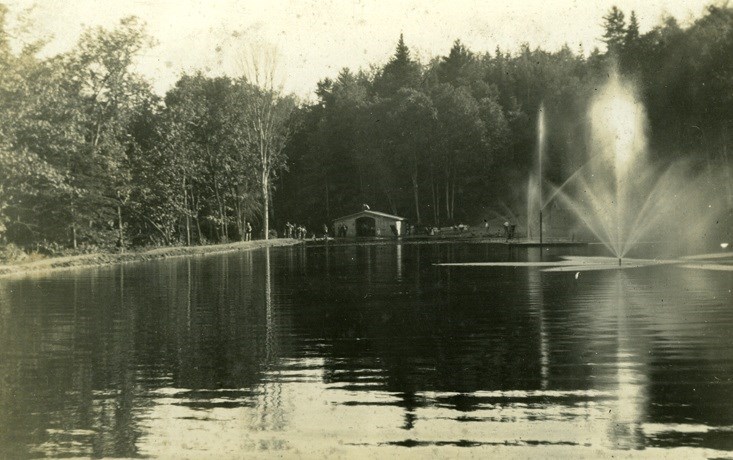From the archives of the Sault Ste. Marie Public Library:
*************************
Remember This…Landslide in Hiawatha
Approximately 13 kilometres or 8 miles north of Sault Ste. Marie there is beautiful parkland called Hiawatha Park. This area is also referred to as the Landslide area because you can find the remnants of a landslide that occurred in 1894 that changed the landscape forever.
In a Sault Star article from August 2, 1902 it is recommended as a popular place to visit, describing it as “a portion of cliff overlooking the Root River has slid into the valley, which is . . . of the nature of a canyon, two or three hundred feet in depth. The view from the plain above the canyon and river is very extensive and very beautiful.”
Although many locals felt that the landslide was as ‘old as Gros Cap Mountain’ local residents R.G. Pratt and Jas. Bassingthwaighte recounted when the landslide actually occurred. In a Sault Star article from February 23, 1926, Mr. Pratt recalled that he and a friend travelled across the area on their way to Trout Lake to go fishing. They planned to camp overnight at the lake but were forced to seek shelter under a rock overhang near the lake when a storm began to form. They described an ominous-looking thunderstorm which turned the northwest sky a greenish yellow colour. A fierce storm erupted breaking the branches of trees and then the hail pounded the lake raising the level of the lake by about a foot. They recalled hearing a heavy roar in the distance. The next day when they were on their way to Sault Ste. Marie they passed back by the same path they had taken to get to Trout Lake the day before but they now encountered a huge hole which they described as a “yawning abyss”. This storm seemed to have targeted the area north of Sault Ste. Marie snapping in half trees and Mr. Bassingthwaighte recounted how he and others travelled north to see the damage.
Professor A.B. Willmott provided Mr. Bassingthwaighte with a possible theory to explain how the landslide happened. The Professor said the area had a great deal of sand and gravel with clay underneath it. The large amount of rain coupled with the concussion of thunder caused the surface to slip. Later stories said the cause of the landslide was attributed to heavy rainfall and melting snow. The sound of the landslide was said to be heard nearly five miles away.
The canyon that the landslide created continued to increase from the fallout a little more each spring during the period of melting and runoff until 1950. Bulldozing of the hill in order to create a better hill for the Sault Ski Club seemed to stabilize it. In more recent years earth berms have been added both at the top of the hill and about halfway down the hill. Trees have been planted on the hill as well as a way to add stability.
Hiawatha Park covers 600 acres of forest, with 14,000 pine trees that had been planted by W.I. Thayer, a local lumberman. The Hiawatha Lodge was constructed in 1926 by W. I. Thayer who worked to make Hiawatha a resort and game preserve. In 1950, the park was sold by the Thayer family to the Kinsmen Club of Sault Ste. Marie. A condition of the sale was that the area had to be developed into a public park. In 1952, a pool was constructed which was fed by Crystal Creek. In 1953, a wooden arch was erected at the entrance of the park and during the same year the stone fireplaces and bathhouses were built. In 1959, the W.C. Thayer Memorial Dam was built which aided in filling the swimming pool. During the summer, day camps were operated by the Community Services Board in order to teach children how to swim. Hiawatha was also a popular picnic stop for many local families and tourists alike and in 1952 an Order in Council made the park a Crown game preserve.
Crystal Falls and Crystal Creek were not always known by that name.
They were previously known as Silver Falls and Silver Creek and it is believed that they derived their names from the old silver mine that was being worked in 1886.
Hiawatha Park still stands as a popular tourist park with cross country ski trails in the winter and hiking trails in the summer and some of the most beautiful scenery that locals and tourists can enjoy in the Algoma region. As for the landslide, whether it was caused by rain, melting snow or thunder it helped create an area that the locals could enjoy year round!
*************************
Each week, the Sault Ste. Marie Public Library and its Archives provides SooToday readers with a glimpse of the city’s past.
Find out more of what the Public Library has to offer at www.ssmpl.ca and look for more Remember This? columns here
